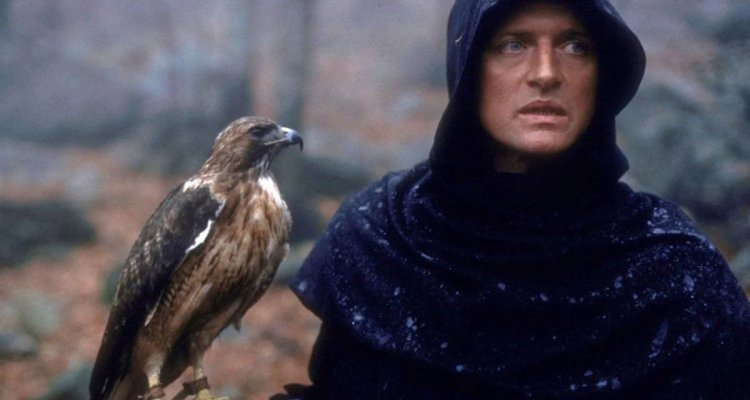
“Greed, for lack of a better word, is good,” Gordan Gekko told us – and we believed him. It was the 1980s. The experimentation and comparable restraint of the American New Wave had crested and crashed, flooding 80s cinema with cheap excess. What had been operatic overload with a point in Siegel, Kubrick and Lucas was now stagnant, murky in its message and rubbish strewn. Nothing demonstrated this better than the decade’s dubious love affair with Fantasy cinema. While post-millennium interest in the genre course-corrected with devout attempts to do Fantasy justice by staying true to text (as in the case of Tolkien-by-way-of-Jackson or even Thrones), 80s Fantasy cinema just soaked up the stinking floodwaters. As a result, the films and their concerns became indistinguishable from the MTV, gold-plated toilet, glamour-model aesthetic assimilating everything else.
But strangely, there’s still so much we hate to love about these films. Among examples leaving the era with their legacies intact, like The Dark Crystal, Boorman’s Excalibur and The Barbarian Schwarzenegger was born to play in Conan, there’s a rogues’ gallery of stylistic failures and xerox copies of better movies. Many of these films have been (perhaps rightly) forgotten – but are they forgiven? Hollywood has been busy, of late, failing to rebottle the lightning of the decade’s classics. Stranger Things, meanwhile, has been projectile vomiting 80s culture at the small screen. Despite these efforts, the Fantasy films of the past haven’t received very much attention (or affection, for that matter). Greed might have been good in the 80s, but you can have too much of a good thing.
1. Hawk the Slayer (1980, Terry Marcel)
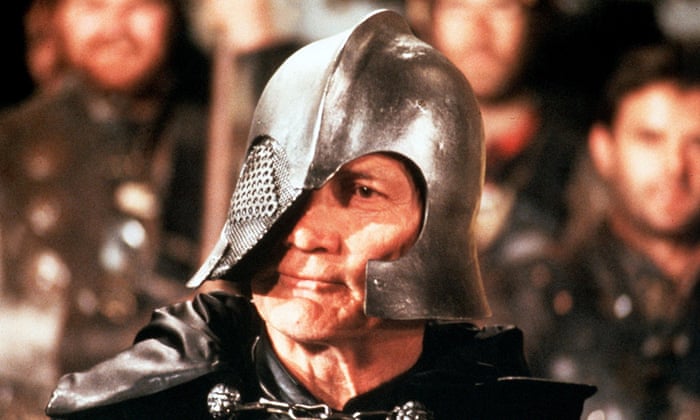
You have to question how Hawk the Slayer came to be. Like some hero or monster from mythology, it seemed to spring into existence fully formed. Already burdened with the worst cinematic sins of the genre, before they even had chance to become sins, it’s difficult to trace the film’s Fantasy lineage. Kurosawa-esque in its lazy narrative, the film is also peppered with action motifs unashamedly stolen from Westerns, like Mexican standoffs with swords, Spaghetti pan pipes and a repeating crossbow straight out of Peckinpah.
Mostly, Marcel’s film seems to have largely been inspired by a CliffsNotes of The Lord of the Rings. Its most likely antecedent is the wonderful, if unfinished, 1978 animated adaptation of Tolkien’s classic, playing in UK cinemas at the time of Hawk the Slayer’s development. Front-loaded with inciting, if not exciting, incidents and cheap MacGuffins, the audience knows immediately who to root for but never really why. The eponymous Hawk and a bingo card of Fantasy henchmen (an elf, a dwarf, a Bernard Bresslaw-shaped giant etc.) ride from one virtue-signalling vignette to another.
Fighting Hawk’s evil brother, Voltan, through the backwoods of Pinewood Studios, malfunctioning fog machines and the escaped exhibits of a local reptile house, the heroes lose their way – both geographically and narratively. Early concerns about bequeathed magic swords (with adventure gamebook names) and fractured kingdoms soon devolve into common thievery and hostage negotiations over an inconsequential nun. British actors orbit a miscast lead and do their best with a wooden script.
The film is perplexingly progressive for its time, presenting a range of strong, female caricatures. The humour also has a pedestrian charm to it. The main draw is Jack Palance as Voltan, whose scene-chewing villainy seems to be the only thing holding the film together. You do, however, get the feeling that the director and crew had incredible fun making this movie and this permeates the end product – and perhaps this is enough to forgive Hawk the Slayer its shoddy execution.
2. Time Bandits (1981, Terry Gilliam)
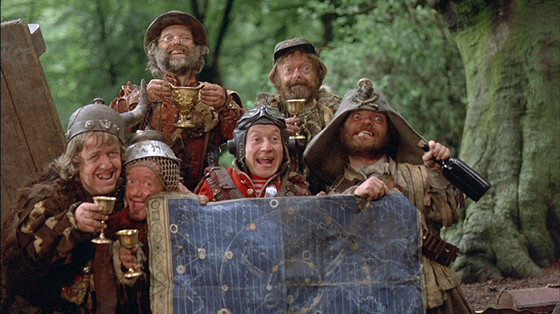
In many ways, Time Bandits suffers from the opposite problem to Marcel’s picture. If imitation is the highest form of flattery, then Hawk the Slayer is drooling in its sycophancy. Gilliam, meanwhile, is a visionary director whose projects bleed with the confidence of a man whose position in the cinematic comedy Hall of Fame is already secure. Like the inferior Marcel, he can sometimes lose his way but with Gilliam this is often intentional. He is the king of defamiliariarisation, ultimately making strange what should appear clear and normal to the audience. This approach is designed to arrest the audience’s attention but has succeeded to differing degrees in his career, with the indulgence particularly paying off in Brazil and the wonderful 12 Monkeys.
Time Bandits was somewhat of a financial success and critically respected at the time of release for its visual style and fierce desire to reach beyond genre conventions. What does it need to ask forgiveness for? More than any other film on this list, its sin is that of 80s excess – it just so happens that Gilliam’s particular brand of Fantasy insanity chimed with the quick-fire, visual gluttony of the decade. Our eyes might have been bigger than our stomachs, however, as proved by box office bombing of the stylistically similar The Adventures of Baron Munchausen a few years later. This could explain why both Time Bandits and Munchausen have been largely forgotten, despite the uniqueness of their visions.
In opting for defamiliarisation as one of his primary modes of engagement, Gilliam risks alienating his hard-won audience. 80s cinemagoers might have been wowed by the spectacle but it was not an experience they were eager to repeat. Several choices that Gilliam made beyond his idiosyncratic aesthetic are alienating to the audience. As a PG tale of kleptomaniac, time-travelling dwarves dragging a schoolboy called Kevin along for their interdimensional adventures, our main characters are problematic. As an avatar for the audience, an eleven-year-old boy is an ill fit for adult watchers.
On the other hand, as a film that puts time travel to exceptionally good narrative use, the swift movement between time periods is disorienting (if gloriously so) and rewards a knowledge of history, with which younger viewers are less likely to be equipped. Also problematic is the fact that the band of dwarves, clearly main characters who demonstrate agency and initiate the narrative, are far from top billing in the film – a confusing and troubling detail. When jumping from historical era to era, wilful suspension of disbelief is key, but this is undermined by populating history with James Bond and members of the Monty Python cast.
Several minor players do shine as part of this arrangement, however, including a much-missed Ian Holm as Napoleon. The ending itself is alienating in so much as neither Kevin nor the dwarves are responsible for defeating the film’s antagonist. A literal deus ex machina played by Ralph Richardson provides the tension-haemorrhaging resolution and a happy ending for the characters. Despite this distancing, which makes it hard to warm to the film, it’s hard not get caught up in the dwarves’ anarchic escapades and to pity and then fear for Kevin.
3. Dragonslayer (1981, Matthew Robbins)
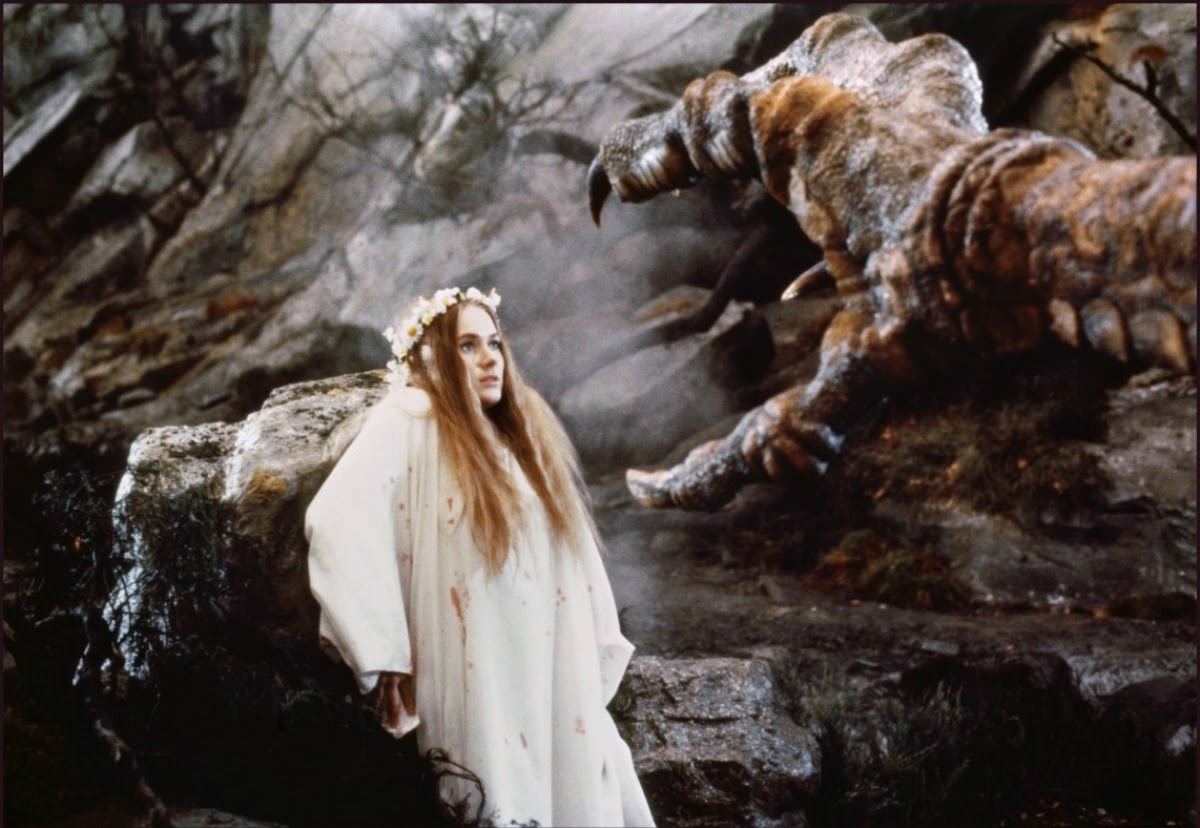
Ralph Richardson made two films in 1981 and he functions as a deus ex machina in both – such was the actor’s magical power on the screen. Alas, It was not enough to guarantee box office success, which is a shame since Dragonslayer gets a good deal right. The sets, costumes and fingernails are appropriately Dark Ages dirty in a fashion that benefited both Excalibur and Game of Thrones. The characters are fairy tale archetypes that have stood the test of time and should have worked. There’s some interesting, if predictable, sexual politicking around issues of victimhood and responsibility.
Robbins is a solid writer-director and the film is technically well-made, with a Jaw-inspired less-is-more approach to the dragon and some first-rate special effects held back for the reveal. And Dragonslayer is not without other window-dressing surprises, especially for what is essentially a children’s film. There is blood, the devouring of flesh and character deaths. There’s also brief nudity, sex as narrative solution and a dark, foreboding tone. These are all to the film’s credit but, unfortunately, the unmistakably American but usually very watchable Peter MacNicol is miscast as the hero.
Dragonslayer was a little too earnest in both execution and desire to strike cinematic gold, however. Made in part by the House of Mouse, it lacks the imagination to take a few more conceptual risks and the ambition to be its own take on the dragon-slaying legends of old. Disney’s sense of entitlement is part of the decade’s obsession with greed and is still part of the business dynamic today. Previously content with assimilated myths, legends and fairy tales that could be rebranded to turn an easy buck, Disney now seem intent on hoovering up the IP of modern popular culture (like Star Wars and comic book heroes) to the same avaricious end. The process is the same: take something enduring and successful, do very little with it with the expectation of a significant return – a return that did not manifest with Dragonslayer.
4. Clash of the Titans (1981, Desmond Davis)
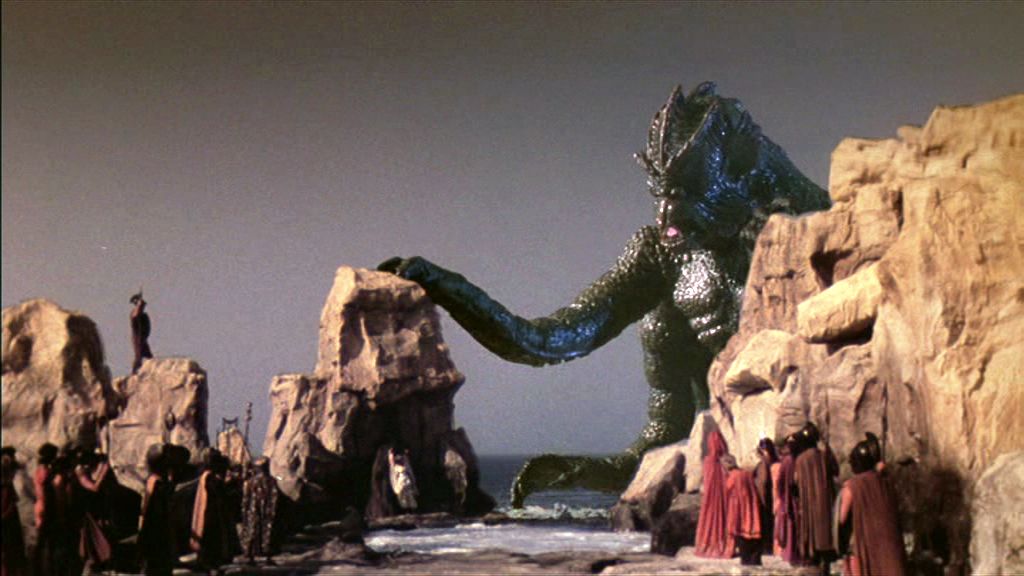
1981 was a good year for Fantasy enthusiasts, yielding flawed but lavish film fare. The most fondly-remembered of these was Clash of the Titans – a retelling of the Perseus and Medusa tale. Despite Davis directing, it is thought of as a Ray Harryhausen film, with the monsters of Greek mythology brought to life with his trademark stop-motion animation.
The animation is both a gift and a curse for the film. It is undeniably clunky, especially when compared side by side with Industrial Light and Magic’s dragon in Dragonslayer. But when safely viewed like Medusa, in reflection and at a distance, the film becomes an affectionate throwback to the monster movies of the 50s, 60s and 70s. Like assorted prehistoric epics in the vein of One Million Years BC, the various voyages of Sinbad and Titans’ spiritual sister picture Jason and the Argonauts, the film’s gusto and charm outshines its shortcomings.
Clash of the Titans is undeniably a pleasure, if a guilty one, but does share other problems with its counterparts on this list. Once again, the film is weaker for a miscast main character. Harry Hamlin, like the heroes of Dragonslayer and Hawk the Slayer, cannot hide his New World accent and origin. Somehow it works better in a mythical setting, where simplistic heroes and wooden acting appear to complement each other. In contrast, Burgess Meredith and Laurence Oliver lend effortless gravitas to otherwise silly proceedings.
Another criticism that is held against the film is its desire to embellish what is already a cracking tale. With gods, sea monsters and gorgons not enough for 80s audiences, some Fantasy elements are fudged (Pegasus, tangentially part of the myth, is brought front and centre for visual fanfare) and some are unnecessarily invented (a menagerie of giant animals, a mutant demigod and a clockwork owl). Fortunately, the film turns out to be more than a sum of its stop-motion parts, even if it has been replaced for modern audiences by a 2010 remake that proved that perfectly rendered CGI monsters does not a classic make.
5. The Beastmaster (1982, Don Coscarelli)
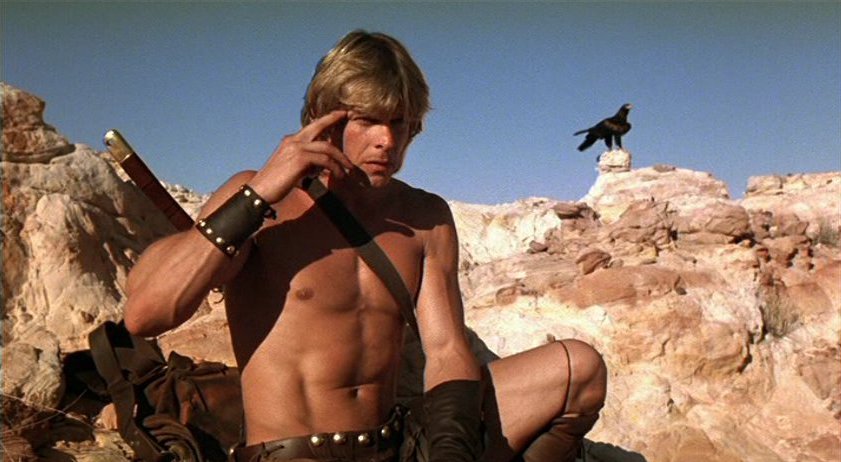
With The Beastmaster, the 1980s fantasy fascination really hit its stride. Released a few months after Conan the Barbarian, the visuals are big but cheap. The story is all but forgettable beyond the Conan-like origin of its main character, Dar, and the title’s self-evident proclamation that he has a useful kinship and ability to communicate with animals. On set, these included a couple of untrainable ferrets, an eagle that handlers couldn’t convince to fly and a black panther that was actually a more pliable tiger painted black.
The film was a barely modest success yet inexplicably spawned two sequels that were forgotten just as quickly as the original. Ultimately, the film is the Rosetta Stone of sword and sorcery movies, helping us to translate other barbarian films. A muscular hero (played by an admittedly likeable Marc Singer) is a must, as Conan proved also. Throw a scantily clad redhead into the mix (like Red Sonja) and a dark-skinned bodyguard (à la Conan the Destroyer) and you’re almost home. Finally, a power-mad villain is essential, which in The Beastmaster is the enjoyable but ill-fitting Rip Torn. You can almost hear him utter, If you can dodge a wrench, you can dodge a sword!
Like Conan, The Beastmaster has loose literary origins. A movie cannot serve two masters, however, and film ends up pillaging a few key ideas from its source material before selling out to the decade’s early obsession with biceps, cheap spectacle and simple storytelling. That said, Dar’s ability to communicate with animals does allow The Beastmaster to stand out a little among its cinematic barbarian peers.